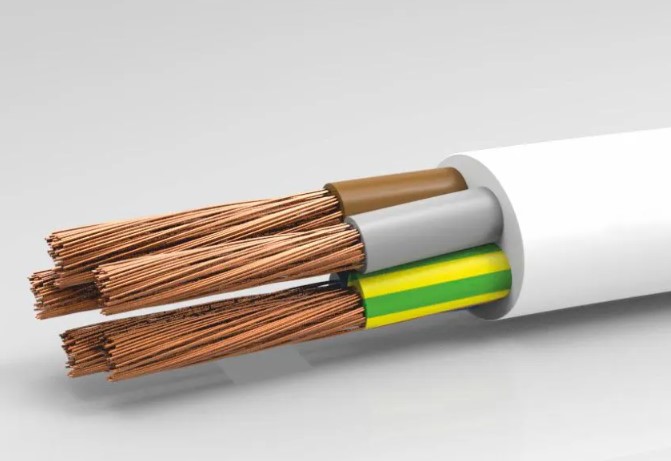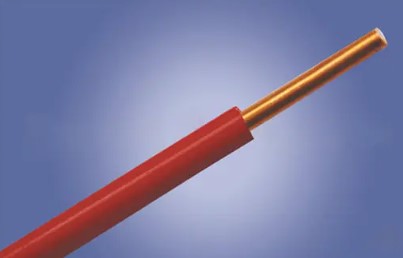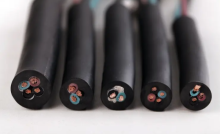より線ケーブルと単線ケーブルの違い


より線ケーブル
ケーブルには撚り線ケーブルまたは単線ケーブルが含まれます. より線ケーブルと単線ケーブルのどちらを使用するかの選択は、いくつかの要因によって決まります。, アプリケーションの種類やプロジェクト環境など. 適切なタイプのケーブルを選択すると、プロジェクトのケーブル配線をより論理的にすることができます.


撚り線ケーブルとは?
より線ケーブルには、 複数のワイヤで構成される導体 撚り合わせて外側のジャケットで包みます. 通常, このタイプのケーブルは仕様によって識別できます. 例えば, ある 7 × 12 ケーブルは、 7 のワイヤー 12 一緒に取り残されたゲージ.
より線は柔軟性が高く、金属疲労に対する耐性が高い. 通常, より線はプリント基板メーカーに選ばれる製品です. これは、この種の用途で単線を使用すると、製造中に回路に大きなストレスがかかるためです。. より線はコンピュータのマウスケーブルにも広く使用されています, 溶接電極ケーブルおよびAC電源ケーブル.
ソリッドワイヤーとは?
単線ケーブルには、導体として 1 本の単線銅線が含まれています。. 2 つの配線センター間、または配線センターと配電ボックス間の永久ベース リンクに使用されます。. このタイプのケーブルは、 減衰 そして安価です. 通常, ソリッド ケーブルは水平および垂直構造のケーブル配線に使用され、設置後は曲げないでください。.


より線ケーブルと単線ケーブルの違い
1. 柔軟性. ソリッドケーブルは柔軟性が低い, 一方、より線ケーブルはより柔軟です. ソリッドケーブルは繰り返し曲げると断線する傾向があります. しかし, より線で終端処理した場合, 個々の導線は時間の経過とともに破損したり緩んだりします. 対照的に, ソリッドワイヤーは常に元の形状を保持します. 要約すれば, 安定した配線環境では単線を使用し、より湾曲したスペースや狭いスペースではより線を使用します。.
2. 収率. より高い (より薄い) ゲージの数値は低い数値よりも損失が大きい (厚い) ゲージ番号. したがって, 撚り線ケーブルには 20% に 50% 単銅ケーブルよりも減衰が大きい (ソリッド銅ケーブル). 加えて, より線ケーブルは、導体に空気が存在するため、単線ケーブルよりも DC 抵抗が高くなります。. 全体, ソリッドコアケーブルはより優れた電流導体であり、優れた安定した電気特性を提供します。.
ワイヤー内のより線の撚り数が増えるほど、, 柔軟性が高いほど, the number of strands affects the price – the more strands that make up a cable, 費用がかかるほど. コストを抑えるには, カテゴリ 6 カテゴリ 6A より線ケーブルは、適切な柔軟性を維持するために十分な数のより線を持つように設計されています。, しかし、大きな価格差を生むほどではない. 言い換えると, より線ケーブルの選択による追加コスト (編組ケーブル)ソリッド ケーブルが適切ではない環境や用途では、ソリッド ケーブルを選択することで性能や規格への準拠を損なうリスクを負うほどではありません。. より大きな柔軟性が必要な環境の管理されたエリアでは、常に撚り線ケーブルを使用してください。!
この情報がお役に立てば幸いです. ZMS CABLE は、設置に対する技術サポートを備えた信頼性が高く経済的なケーブルをいくつか提供しています. ご不明な点がございましたら, お問い合わせください.
Recent Posts
三相ケーブルとは何かをすばやく理解する方法? ここでお気に入り!
In the world of industrial and commercial power distribution, three-phase cables play a critical role…
嵐と洪水! 防水ケーブルが電力を保護する方法?
Introduction In recent years, heavy rainfall and flooding have become increasingly frequent worldwide, causing severe…
循環経済におけるケーブル業界の役割と課題
持続可能性が世界的な優先事項となるように、はじめに, industries across the spectrum are reevaluating their operations…
ケーブル業界はグローバルなサプライチェーンの課題にどう対処できるか?
グローバルサプライチェーンは、メーカーを接続する複雑で必須のネットワークです, ディストリビューター, 小売業者,…
再生可能エネルギーがケーブル需要に与える影響
Introduction The global shift toward renewable energy has become a cornerstone of efforts to combat…


